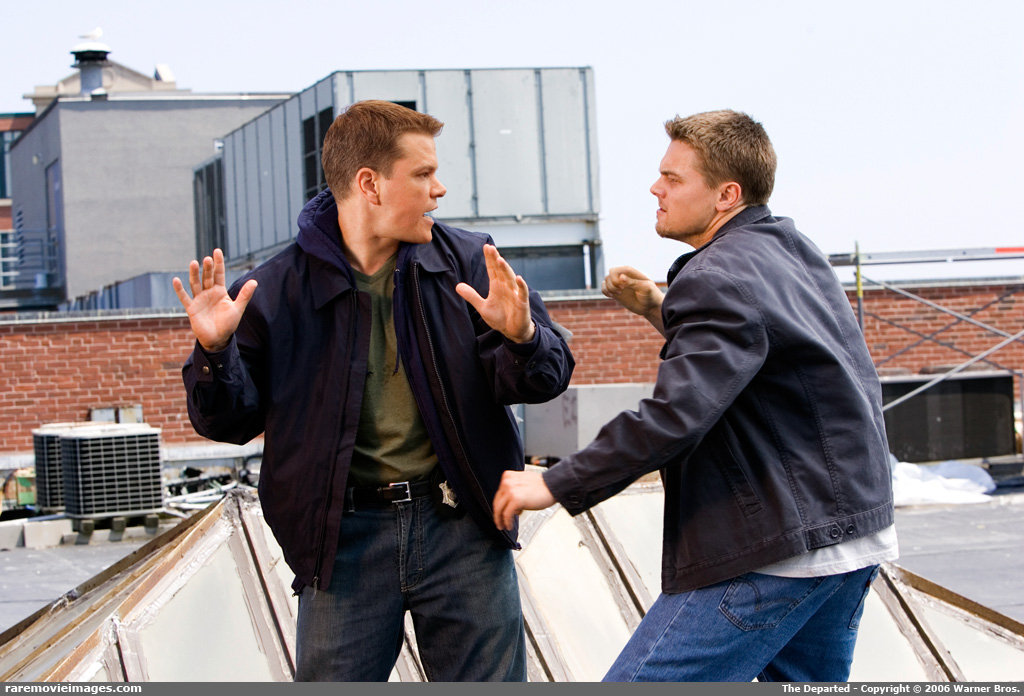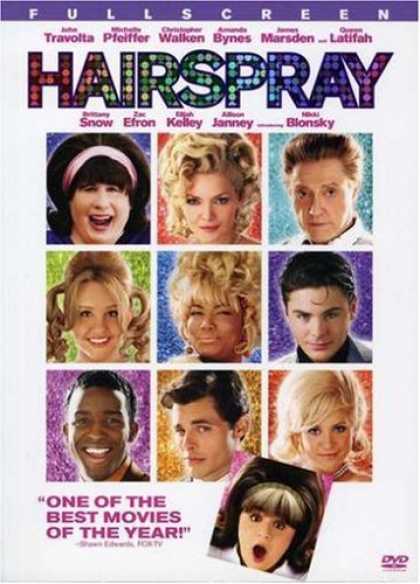Dir. Gus Van Sant
Starring: Matt Damon, Robin
Williams, Ben Affleck, Minnie Driver
In my review of The Departed I described Matt Damon as “always-watchable”. That’s a relief
because he is in 90% of the scenes in Good
Will Hunting and delivers an outstanding performance as the 20-year old
genius from the blue-collar South Boston projects.
We open with Will Hunting (Damon)
working a menial janitor’s job. He hangs around with his three best mates,
dividing his time between “batting cages
and bars”. An orphan and past victim of physical abuse, he has a
hair-trigger temper and has a lengthy rap sheet. But he has one defining characteristic:
he is an absolute prodigy. He has a photographic memory and can recall huge
chunks of text or arguments – and can synthesize them in such a way that he can
draw his own conclusions on the works. After he is spotted solving a
mathematical problem on a corridor chalkboard (he works as a janitor at the
prestigious Massachusetts Institute of Technology), he is taken under the wing
of Professor Gerald Lambeau (Stellan Skarsgård) who attempts to foster his
abilities at mathematics. He is also forced to attend a therapist. After
refusing to co-operate with those initially provided, Lambeau eventually takes
him to his old college room-mate, Sean Maguire (Robin Williams), who teaches at
a community college. Sean comes from the same background as Will and pushes
back. Eventually a break-through is made. Will is then presented with the
problem of what he wants to do with his life. Does he stay in South Boston with
his friends and working at “honourable”
labouring jobs, or does he embrace the regard from MIT professors, attend the
interviews Lambeau has set up for him, and build a career utilising his gifts,
or does he follow Skylar (Minnie Driver), the British Harvard student he falls
for, as she moves to California?
It is, like Ordinary People, one of those movies that use therapists as a
device to get characters to open up. However, like Ordinary People, it handles it well. It is a two way process where
Will and Sean both learn from each other. Sean is not some God-like genius; he
is a flawed individual who has gone through just as much shit as Will in his
life, and is at peace with it. And he is also willing to argue back when Will
tries to put him down: “I thought about
what you said to me the other day. About my painting. Stayed up half the night
thinking about it. Something occurred to me. I fell into a deep, peaceful sleep
and haven’t thought about you since. You know what occurred to me…? You’re just
a kid. You don’t have the faintest idea what you’re talking about.” He
pushes Will to open up and allow people into his life. His theory is that Will
has been hurt so many times he pre-emptively destroys relationships to stop
himself getting hurt emotionally. This is why Will refuses to open up to Sean
at first, why he belittles the work he is doing with Lambeau, why he runs away
from Skylar. Will’s perfect state of grace is for things to remain the same as
they always have: him having a laugh and a drink with Chuckie, Morgan and Billy
down in his home neighbourhood. These are the people he can trust implicitly,
as Sean recognises (“Chuckie’s family; he
would lie down in fucking traffic for you.”)
Everyone has their idea of what
they want for Will. Best friend Chuckie (Ben Affleck) wants him to escape
Southie: “Tomorrow I’ll wake up and I’ll
be 50 and I’ll still be doin’ this shit. And that’s alright. That’s fine. I
mean, you’re sittin’ on a winning lottery ticket. And you’re too much of a
pussy to cash it in, and that’s bullshit. ’Cause I’d do fuckin’ anything to
have what you got. So would any of these fuckin’ guys. It’d be an insult to us
if you’re still here in twenty years’ time. Hangin’ around here is a fuckin’
waste of your time.” Lambeau wants Will to realise his genius even though
it is killing him to realise that what he works so hard for comes intuitively
to this twenty-year-old (there are shades of Amadeus here with Lambeau the Salieri to Will’s Mozart): “Most days I wish I’d never met you ‘cause
then I could sleep at night. I didn’t have to walk around with the knowledge
that there was someone like you out there. I didn’t have to watch you throw it
all away.” Skylar wants Will to take a chance on their relationship and
come with her to San Francisco. For the first time in his life he has
expectations placed upon him and he doesn’t like it. He can synthesize other
people’s arguments in books and come out with ideas of his own, but he finds it
very hard to harmonise all these expectations.
The script is surprisingly good.
I say surprisingly because it was co-written by Damon and Affleck. In many ways
it is a shame that they didn’t stick to writing. Affleck got too big, too fast –
Armageddon, Pearl Harbor, Jennifer
Lopez. He crashed. But the pair of them are good value for their screen-writing
Oscar. And Affleck taking a smaller role, leaving Damon to get all the
headlines is very unselfish. It reminded me that they started off in Kevin
Smith independent movies and were recognised as a talent. For direction they
brought in Gus Van Sant – thankfully he didn’t bring in the clever-clever ideas
and Shakespeare references of My Own Private
Idaho but let their script speak for itself. Together the joshing of Damon,
Affleck and their two friends (Cole Hauser and Casey Affleck) is believable. Yet
again Robin Williams does a good serious performance (though he did improvise
some of his character’s funniest lines – such as the one about his wife farting
in bed). He is not creepy as he was in Insomnia,
but he is so much more enjoyable to watch as a straight man in my view. Minnie
Driver as Skylar is the surprise casting. I wonder if the character was
originally meant to be British, or whether they just rewrote it to suit her. I’ve
never met a Brit called ‘Skylar’ however (I’d only ever heard the name before
as the [male] villain in Heroes). Ben
Affleck has now gone on to write (and direct) two further Boston-set movies: Gone, Baby Gone and The Town. Having now seen what he is capable of doing when he is
not a blockbuster romantic lead I am much more likely to give them a watch. I’m
aware that there has been a bit of a backlash towards Good Will Hunting, but for me, watching it for the first time 15
years after it was released (15 years? Christ, I was at Cambridge myself at
that point!) I thought it stood up very well. It is definitely worth a watch.
 |
| Two geniuses: Damon and Affleck scripted the film, starred in it, wrote the femetoon, sang the femetoon... |
What have I learnt about
Massachusetts?
The Southie projects of Boston
are 40 minutes by train and a world away from the university areas of Cambridge.
South Boston is full of beaten-down houses with junk-filled yards and neon-lit
bars full of Irish-Americans. The sense of humour is defiantly crude and working-class.
Cambridge is another world, and is home to two absolute world-class universities in MIT and Harvard. Interactions between the two generally do not go
smoothly: witness Lambeau finding the university maintenance department or him
seeking out Sean in a pub and asking for a Perrier (“That’s French for ‘club soda’”). There is arrogance amongst the
academics; Lambeau thinks that Sean teaching at a community college is a sign
of failure and that the other man must by default be jealous of him.
Baseball is a central focus of
life. Will and his mates even go to watch a Little League match. And the entire
city focuses on the Red Sox baseball team. The easiest way for Sean to explain
how much his wife meant to him is to recount how he passed up the chance to
watch a legendary match to talk to her.
Can we go there?
This is another film set in
Boston. Again, South Boston features prominently, contrasted against the
university area of Cambridge. But while some exteriors were filmed on location,
most of the film was made in Toronto. The University of Toronto stood in for
both MIT and Harvard, with the McLennan Physical Laboratories there providing
the classrooms. Wycliffe College was the real-life location of Skylar’s dorm. The
Harvard bar where Will so memorably puts down an arrogant student was supposed
to be the Bow & Arrow Pub, but was actually the Upfront Bar & Grill
on 106 Front Street East in Toronto. It was used as
another ‘Boston bar’ in the John Cusack version of Fever Pitch in which the lead character supported the Red Sox
rather than Arsenal. The novelty store Will later visits with Skylar was
Ontario Speciality Co on Church Street – freakily after 73 years of operation it closed its doors forn the last time today.
The pals’ Southie local was in
Boston however – Woody’s L St Tavern at 658 E Eighth Street (and these days it does cash in on its links to the film). The road in the closing credits is
the Massachusetts Turnpike heading west through Stockbridge. And a number of
exteriors were used, particularly around Harvard Square (where Will spots his
history student competition through the window of Baskin-Robbins-Dunkin’ Donuts
- “I got her number. How d’you like them
apples?”). The Bow & Arrow and that branch of Dunkin’ Donuts have now
been replaced by the Grafton Street Restaurant and Bar
(the web address freaked me out because I used to live very near to Grafton Street in the real Cambridge in England). Also gone is ‘The Tasty’,
where Will and Skylar share a pickle-y kiss. They later meet up again at Au Bon Pain.
Dunster House at Harvard served as the exterior of Skylar’s dorm, Sean taught
at Bunker Hill Community College in Charlestown, and Chuckie collects Will outside South
Boston District Municipal Court. Wills house was at 190 W Sixth Street in South
Boston, and is privately owned (by someone who has never seen the film). Sean
takes Will to Boston Public Garden for his lecture.
Overall Rating: 4/5














